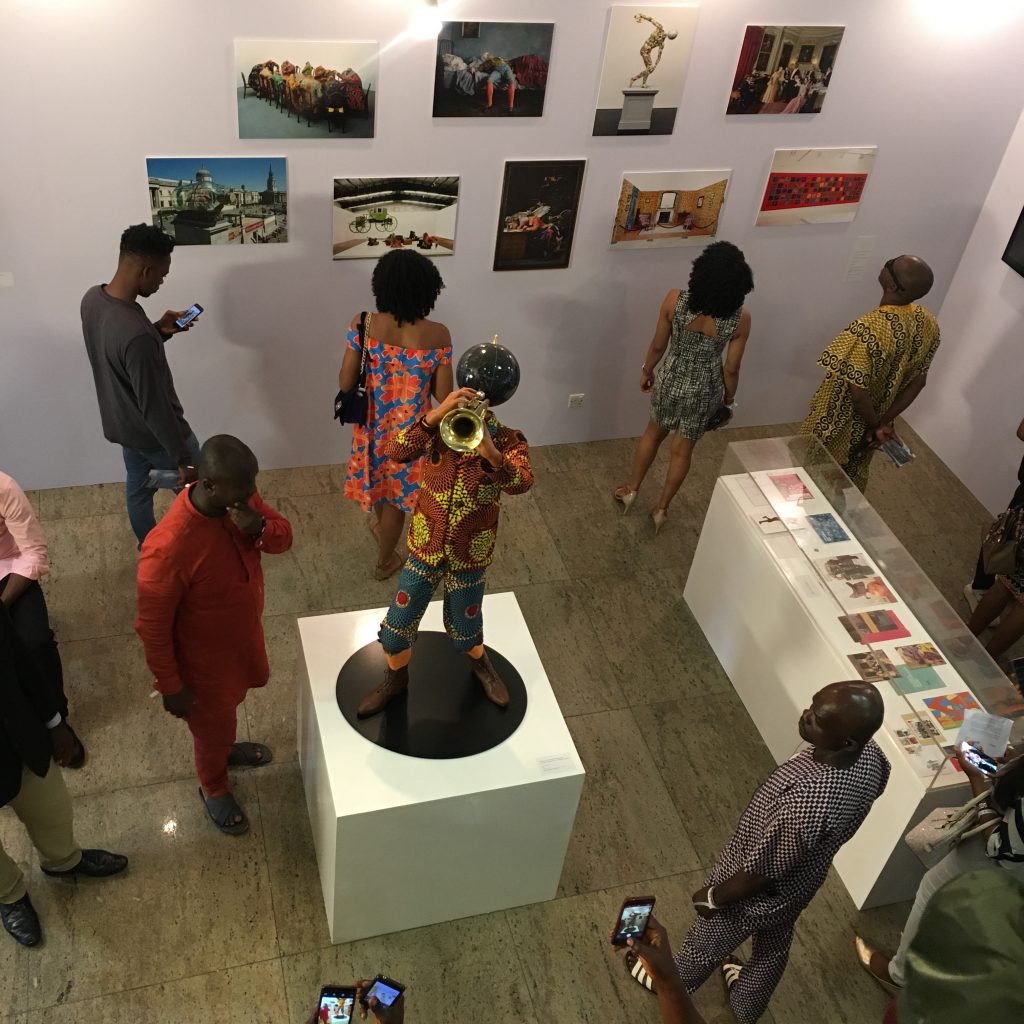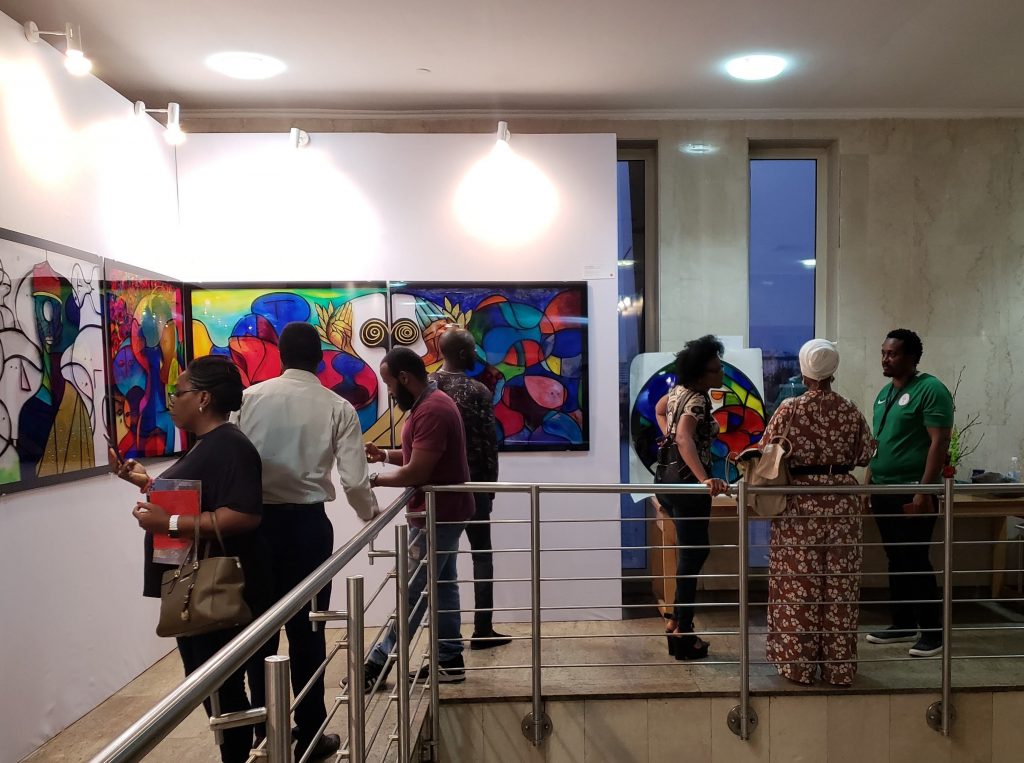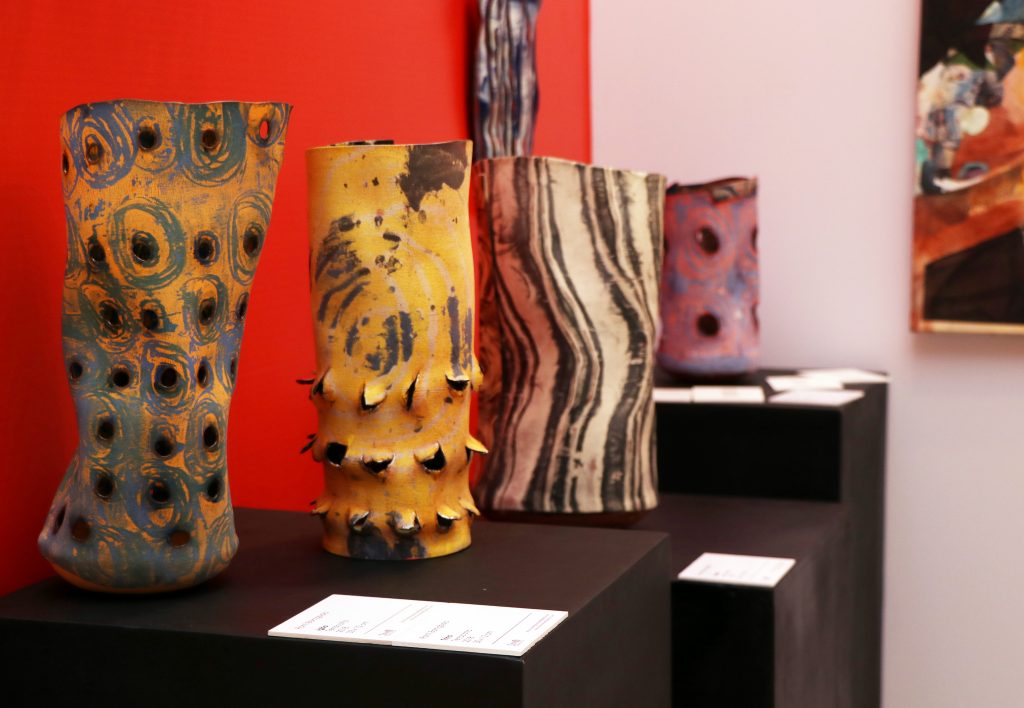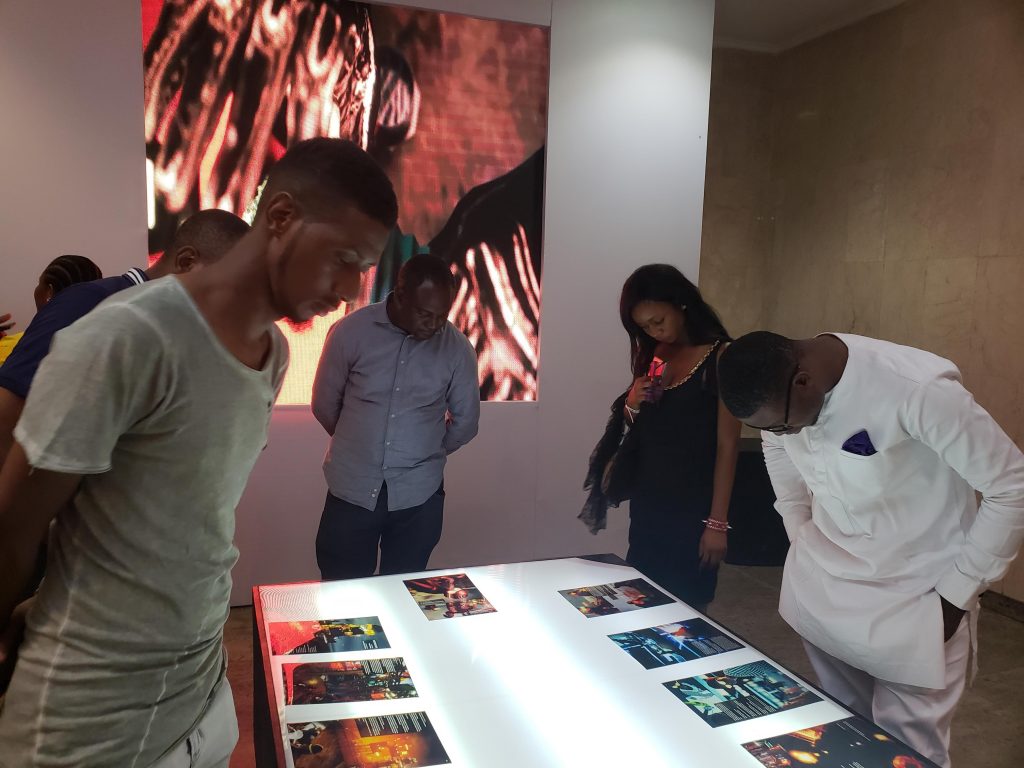
It was apt that in the days leading up to the opening of the third edition of ART X Lagos fair, Ben Enwonwu’s “Tutu”, the “long-lost masterpiece”, became the main focus of a huge media campaign to attract audiences. The self-declared biggest art fair in West Africa, focused on the making of its own myth, was using a painting, whose myth is in advanced stages, as a publicity tool. But by Sunday 4th November, the final day of the fair, “Tutu” was long gone, unavailable to the local visitors who were meant to see it after its long disappearance. Maybe I misinterpreted the kind of audience who can see “Tutu”. And there’s a chance visitors whose only opportunity to experience the fair is on a Sunday morning do not factor into that projected audience.
Apart from Tutu, the primary attraction for this year’s ART X Lagos, was the keynote artist Yinka Shonibare MBE, who had a shrine to his career on the ground floor of Civic Center, venue of the fair, which featured Trumpet Boy (2010), photographs of his works, and other paraphernalia marking his illustrious career, including an audio-visual installation. There also was a video room on the first floor playing the artist’s works—“Un Ballo Maschera” (A Masked Ball), “Odile and Odette” and “Addio del Passato”—on a loop. And later in the afternoon, Shonibare was engaged in a conversation with art historian Chika Okeke-Agulu, where with Okeke-Agulu’s fastidious focus on art historical contexts and Shonibare’s Yoruba-spiced witty answers, they explored how his rebellious tendencies became the impulse for his early career choices as an artist and a young man, and led to a body of work that is invested in complicating and “corrupting” history.

On the second floor of the Civic Centre that houses the fair’s exhibitions, beyond a change of structure that has moved the live art—this year featuring Isaac Emokpae and Muyiwa Akinwolere—from the exhibition hall to the landing just outside, first impressions are that it’s much of the same. But there’s a slight difference. ART X fair has always tried to feature artists from other African countries. There’s been a constant South African representation since its launch in 2016, and last year there was an apparent focus on art from other West African countries with galleries from Senegal, Ivory Coast and Ghana. This year, there’s increased representation from East Africa, headlined by the presence of three galleries from Ethiopia (Addis Fine Art), Uganda (Afriart Gallery Kampala) and Kenya (Circle Art Agency) and the appearance of Kenyan artists like Paul Onditi, Lincoln Mwangi and Cyrus Kabiru in addition to the selections of Nigerian and South African galleries.
Despite the tendency of Nigerians to be culturally insular, the surrealism of Michael Musyoka’s paintings like “Exchanging Vows” and the impressionist experiments of Onditi’s cityscapes offered a deep fascination for many in the Sunday crowd. A member of the East African contingent at the fair was noncommittal when I asked if this occurred with collectors who visited in the first couple of days of the fair. For while we can talk about the artistic merits of the works on display, ART X Lagos, which has been described as “unapologetically commercial”, seems primarily interested in the ability of these artists to sell.
Bloom Art’s booth with Angela Isiuwe’s minimalist water-colour-on-paper delights. And SMO contemporary Art chose an unusual direction by exhibiting Ranti Bam’s delicately sculpted ornamental bowls and jars.

This commercial bent is perhaps the only justification for the garish arrangement of works at the Signature Beyond Art Gallery booth, a Nigerian gallery that had shown sculptures and paintings by local artists Dotun Popoola, Segun Akano, Samson Akinnire and Sidney Osioh. It’s almost impossible to apprehend the discretions taken by the fair selection committee, but whatever they are, they either have to become stricter, or the fair’s organisers should start thinking of moving to a larger space. Other galleries from Nigeria were better in their presentations, putting forward some of their well-known artists. Bloom Art’s booth with Angela Isiuwe’s minimalist water-colour-on-paper delights. And SMO contemporary Art chose an unusual direction by exhibiting Ranti Bam’s delicately sculpted ornamental bowls and jars.

Beyond the exhibition floor, the fair had other set-ups worthy of attention, like Olalekan Jeyifous and Wale Lawal’s Mad Horse City, a mixed-media display of a futuristic Lagos through comic strips, video and Virtual Reality, situated just outside the exhibition floor. If the fact that the 2018 edition of ART X Prize with Access was won by Bolatitio Aderemi-Ibitola’s video art can be taken as an indication of growing acceptance of the form in Nigeria, then Mad Horse City was a fitting display of what happens when video art is married with ideas. Also, downstairs in the open space by the main entrance of the fair building was the installation “Lagos Drawings – A conductive Project”, a set of drawings by Karo Akpokiere that was supposed to be layered with music created by electronic musician G.rizo through the work of digital technologist Desmond Okeke offered nothing when I responded to its call that said “touch me”. In the place of sound and perhaps rhythm, all I felt as I dragged my fingers across the canvas were ridges.
ART X Lagos continues to grow, buoyed by the business acumen of its founder Tokini Peterside, who finds creative ways to marry art with blatant brand advertising to create an experience that appeals to the deep pockets of the collector class and the exuberant minds of the growing community of young art enthusiasts in the country. Guests who were at the fair on Saturday night for the live concert known as ART X Live—an invitation-only event—spoke of how great it was. Perhaps that’s the kind of event that will keep that young privileged class attending the fair until they, too, have the funds to purchase artworks sold at the fair.
But for all its pomp and pageantry, many in the city know ART X Lagos isn’t the most artistically appealing event to happen during the first weekend in November.
But for all its pomp and pageantry, many in the city know ART X Lagos isn’t the most artistically appealing event to happen during the first weekend in November. Other commercial galleries in the city—many who no longer rent spaces at the fair—have programmes and events planned to attract collectors and enthusiasts to their spaces and meet their artists. For an art fair as invested in the making of its own myth, it must take the existence of these other art projects as direct competition that it must best artistically. This, however, may not matter if ART X Lagos is meeting its commercial aspirations. There is a chance that the fair has arrived at its final form, for better or worse.




